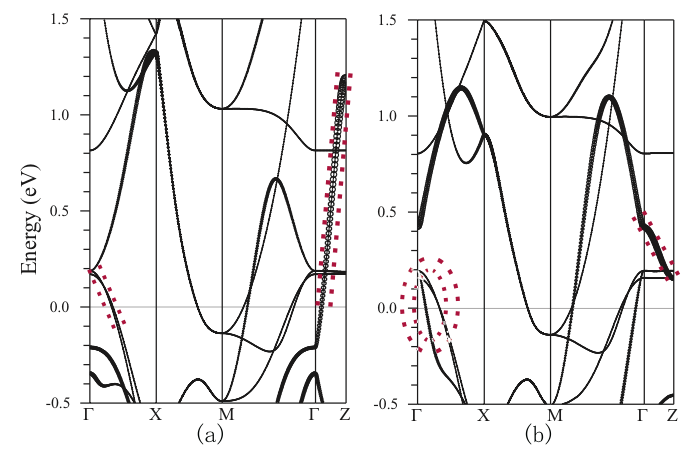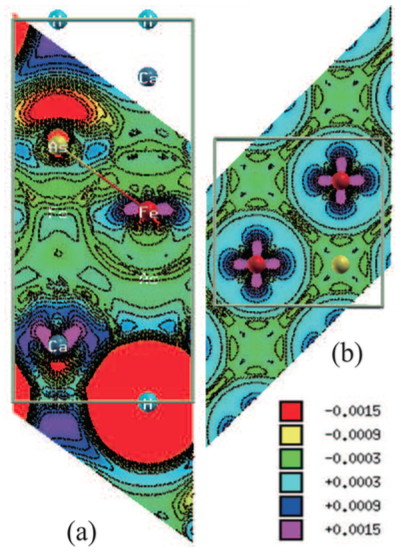
Identifying and studying similar materials that display very different behavior has been an active approach to understand the origin of high-Tc superconducting Fe-based pnictides and chalcogenides, and been expected to promote the quest for new and possibly higher Tc superconductors. CaFeAsF and CaFeAsH are such isostructure compounds with isovalent elemental substitution, however, demonstrate distinct superconducting properties, producing certain questions, which may shed light on the unconventional superconducting pairing mechanism of Fe-based compounds.
Recently, in order to uncover the novel electronic structure of hydride superconductor CaFeAsH, Prof. ZOU Liangjian in the Key Laboratory of Materials Physics, Institute of Solid State Physics (ISSP), Hefei Institutes of Physical Sciences, joined hands with Prof. Warren Pickett from the Department of Physics, University of California Davis, USA to investigate the electronic and magnetic properties of CaFeAsH using the first-principle method and analytical method. Their study has been published in Physical Review B entitled Role of Hydrogen in the Electronic Properties of CaFeAsH-based Superconductors.
The collaborative research team finds that the unusual band introduced by H, which displays strong dispersion perpendicular to the FeAs layers, is shown to be connected to a peculiar van Hove singularity just below the Fermi level (as shown in Fig. 1 and Fig. 2 below).
This band provides a three-dimensional electron ellipsoid Fermi surface neither in other Fe-based superconducting materials nor in CaFeAsF. As seen from Fig. 3, the Q = (π, π, 0) peak of the nesting function ξ(q) is extremely strong and sharp, and the additional structure in ξ(q) associated with the near-circular Fermi surfaces that may impact the low-energy excitations is quantified.
Impressively, indirect electron doping by La on the Ca site of CaFeAsH produces superconductivity with Tmax = 47 K. This high Tc is contrasted with direct electron doping by Co substitution of Fe, which attains only Tmax = 23 K. The calculated results show that electron doping by 25% La or Co has a minor effect on this ellipsoid Fermi surface, but suppresses Fermi surface nesting strongly, which is consistent with the viewpoint that eliminating strong nesting and the associated magnetic order allows high Tc superconductivity to emerge.
This work will help us to understand the high superconducting transition temperature in iron-based superconductors.
This work is supported by the NSF of China under Grant No. 11274310, 11474287, 11574315 and US National Science Foundation Award No. DMR-1207622. Numerical calculations were performed at the Center for Computational Science of Hefei Institutes of Physical Science (CASHIPS).

The contribution of As 4pz orbital to the bands near EF in (a) CaFeAsH and (b) CaFeAsF. (Image by HUANG Yina)

Contour plots of the charge density difference ρ(CaFeAsH)- ρ(CaFeAsF). (Image by HUANG Yina)

Left column: Top view of Fermi surface sheets of nonmagnetic (a) CaFeAsH and (c) CaFeAsF. Right column: The q-space plot of the nesting function ξ(q) of (b) CaFeAsH and (d) CaFeAsF. (Image by HUANG Yina)

86-10-68597521 (day)
86-10-68597289 (night)

52 Sanlihe Rd., Xicheng District,
Beijing, China (100864)

